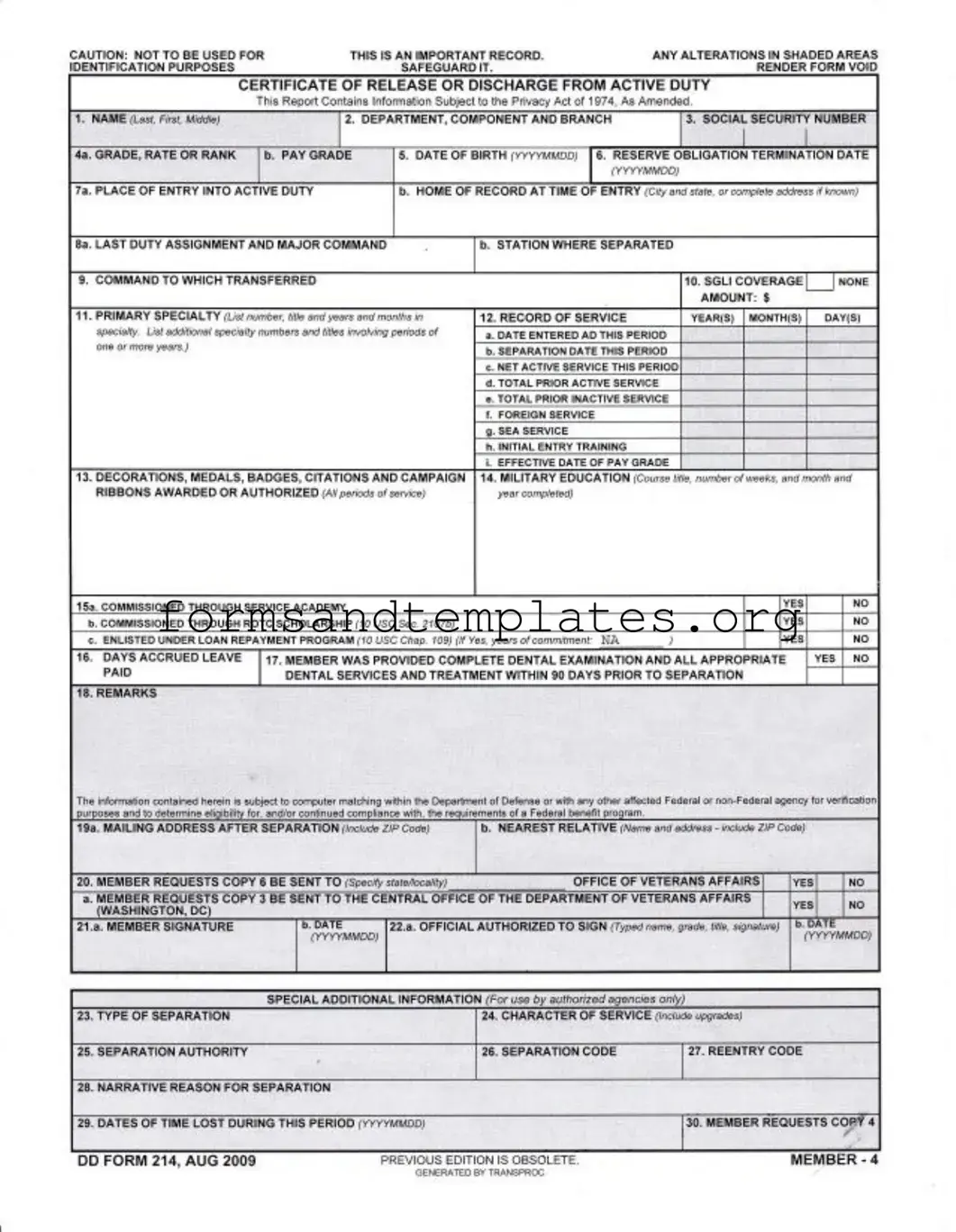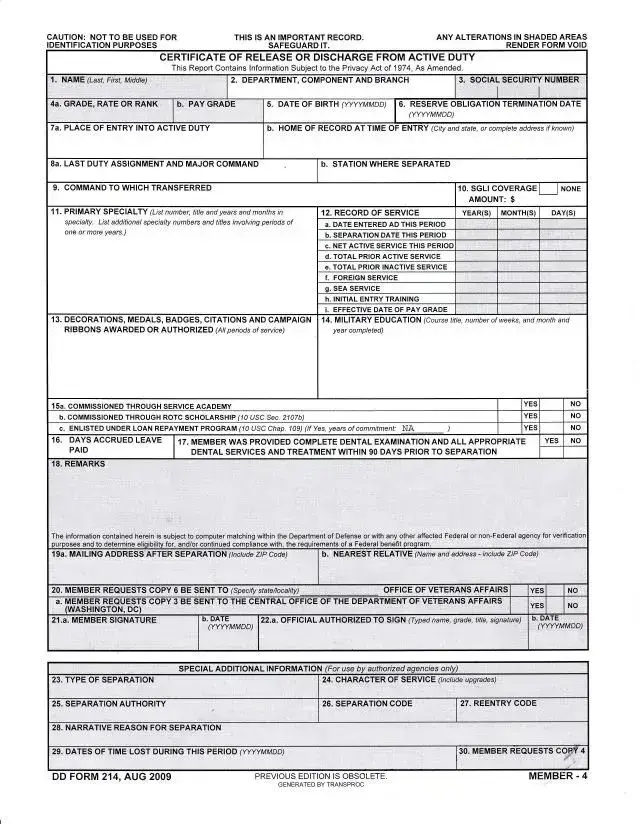Printable Dd 214 Template
The DD Form 214, officially known as the Certificate of Release or Discharge from Active Duty, is a vital document for military personnel. It provides essential information regarding a service member's time in the armed forces, including their discharge status, service dates, and any awards received. Understanding how to fill out this form correctly is crucial for accessing benefits and services, so be sure to click the button below to get started.
Access Editor Here

